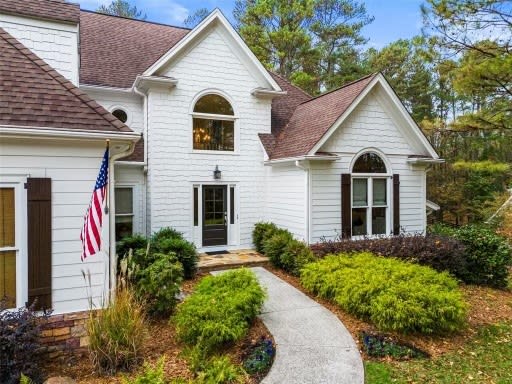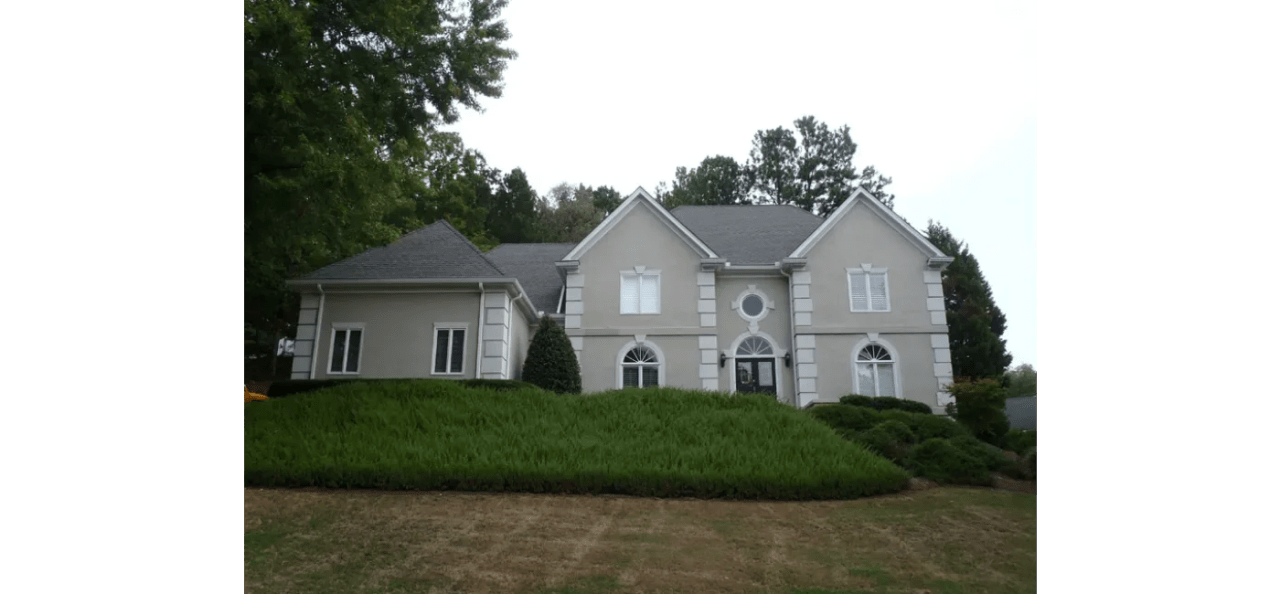Although stucco can be found nationwide, it is most popular in the Southwest region of the United States, and is often found across metro Atlanta. Some advantages of hard coat stucco include a natural resistance to fire, lasting durability, and some people really like the style and look. In order for stucco to remain attractive, it needs to remain in immaculate condition which can sometimes be too labor intensive or costly for some homeowners. Cracking and mold growth are the biggest concerns that spark a stucco to siding transition, but some homeowners may simply want a more modern exterior that reflects their style better.
A stucco to siding transition is sure to be a dramatic change, and can be a great way to ‘flip’ the home and create a fresh face for the structure.
It may sound daunting, but it is achievable – as long as you’re prepared with an actionable plan. Here are a few things to keep in mind if you are considering the change on your current home, or are a homebuyer who comes across stucco homes in your search.
1. Stucco Removal Requires a Hard Hat
Removing stucco can be a pain, but it’s not as difficult as you may imagine. Instead of chipping away at the surface inch by inch, you may be surprised to find that large chunks of stucco can come off at once during the demo, depending on the installation technique used when the stucco was put in. In general, stucco removal usually goes faster than anticipated. Nonetheless, be sure you’re prepared for some heavy lifting, and get the hard hat ready.
2. Investigate Underlying Issues
If you’re doing a stucco to siding transition because of cracking or other signs of deterioration, be sure to determine the extent of the issue. Replacing the siding alone isn’t going to solve certain problems, like compromised structural beams, broken flashing, or weak joists. Sometimes the stucco itself is to blame – but other times, there’s something else going on that you’ll need to address if you want the new exterior to last. If there are no underlying issues, then in many cases, you can place siding directly over the stucco.
3. Install Insulating House Wrap
Traditional stucco was sometimes installed directly over framing, without a reliable building envelope. If that’s the case on your project, it’s best to install insulating house wrap before putting on the new siding to enhance the energy efficiency of the building.
4. Replace Stucco with a Durable Siding Material
A stucco to siding transition is quite a big change. Don’t botch this opportunity by installing a sub-par siding option, like vinyl or wood. Modern materials like fiber cement can deliver long-lasting durability and weather resistance, which can ensure your new siding stays beautiful with minimal effort. Plus, fiber cement is fast and easy to install, so it is highly recommended when conducting a stucco to siding overhaul.
5. Consider All the Styles Available
It’s also important to recognize the stylistic opportunity available when making such a dramatic change on the exterior. A stucco to siding transition opens up an abundance of options – including modern lap, board and batten, shake, and more. If you’re doing a remodel to address deterioration but still find yourself captivated by the look of traditional stucco, keep in mind that there are modern materials that imitate this classic style without relying on outdated aggregates that are likely to break down. For example, you could consider a stucco-style fiber cement siding product that provides better durability and less maintenance.
6. Coordinate Trim in Advance
Don’t forget the trim! When making such a huge change, many homeowners forget about the little details, like coordinating the trim, fascia, and soffit with the new siding. Keep these details in mind during the planning process so you can finish the installation all at once.
BEFORE AFTER

A note on Synthetic Stucco (EIFS)
Synthetic stucco is commonly referred to as Exterior Insulating and Finish System (EIFS). Homes with this exterior finish are often strikingly beautiful, offer great flexibility in home design, and provide energy savings. The process originated in Atlanta in 1980, and quickly became popular in higher-end homes, used in almost 30% of homes built in the southeast by the early 90’s. However, synthetic stucco was found to have potential issues if installed poorly. Today, synthetic stucco has all but disappeared from residential construction. Any stucco you see on a new home is probably cement-based hard-coat.
Suggestions for homes with synthetic stucco:
- Inspection by a firm specializing in this field
- Secure a stucco bond to cover any damage and repair
- Cut the stucco 6” from the ground to keep air flowing and termites at bay
- Regularly check for rot, mold or termite activity
These suggestions apply for both buyers and sellers. Sellers should anticipate inspectors raising flags and buyers acting with trepidation. Buyers that don’t bring in a dedicated stucco inspection firm may miss major issues that will be costly and potentially harmful down the road.
Another thing to consider with stucco homes; many relocation companies discourage or simply direct transferees not to purchase them. High value employees are often covered with “buy outs”. This is when a relocation firm purchases the home to expedite the move and make things easy for the transferee. Given the potential for issues and resulting market stigma with stucco homes, some will suspend offers to buy out transferees of stucco homes. In a market like Atlanta which has significant relocation activity, this can be a problem for owners of stucco homes as the buyer pool shrinks.
The key for both buyers and sellers of stucco homes is to be educated and work only with professionals.
#stucco #siding #transformation #curbappeal #homebuying #homeselling #allura #remodel #exterior #makeover #stuccoremoval



